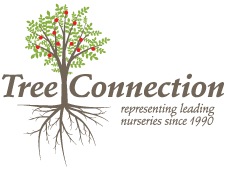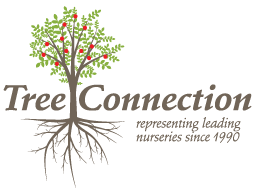Modern apple production has required much research and development of rootstocks with specific characteristics. The primary goals are to:
- reduce the tree size for manageability
- reduce labor
- to increase fruit production per acre
- improve fruit quality
- disease resistance where possible
Great advances have been made in the past century, but there are always new roots with capabilities and challenges.
Work With Tree Connection
Let our team help you put together a winning pollination program for needs.
The information is provided for reference only. For recommendations, please call our staff to learn more.
Apple Rootstocks
| Name | Description |
|---|---|
| B.9 (Bud.9, Budagovsky 9) | Dwarfing rootstock resulting from a cross between M.8 x ‘Red Standard’ (Krasnij Standard) from Russia. B.9 has been widely tested and is used commercially throughout the U.S. It is slightly more dwarfing than M.9 and is slightly more productive. Other traits of note: Very early precocity; very winter hardy; little suckering; requires support; adapted to well drained soil; very resistant to crown rot; more fireblight resistant than M.9. |
| Mark | Mark is a hardy, precocious dwarfing rootstock 30 to 50% smaller than M.9 and more yield effecient. It is susceptible to fire blight and fairly resistant to crown and root rots, produces many burr knots and few root suckers. Mark requires tree support. Trees are very precocious and tree vigor may decline earlier than desired when young trees are allowed to produce heavy crops before attaining the desired tree size. Mark is also particularly drought sensitive. Although mark performance has been variable in the eastern U.S., it has performed poorly under hot, dry conditions in the western U.S. |
| M.27 | This very dwarfing rootstock (about 30 to 50% as large as trees on M.9) and is probably too dwarfing for most commercial situations except for vigorous cultivars on vigorous sites, but it might be considered for home gardens where a small tree is desirable. Trees on M.27 are very precocious and productive and require permanent tree support. Highly susceptible to fire blight and fairly resistant to crown and root rots, produces few burr knots and root suckers. |
| M.9 T337 | Numerous clones of M.9 are now available, including the very common M9 T337. The most commonly planted rootstock in WA., it is very susceptible to fire blight and can develop burr knots. Prefers well drained soils. |
| G.11 | G.11 produces trees of similar size to M.9-T337 and is equally precocious. G.11 is moderately resistant to fire blight; moderately susceptible to woolly apple aphid and crown rot. Other traits of note: requires support in early years; produces few burr knots and root suckers; and it’s well adapted to most soils, but may struggle in sandier locations. Has a high yield efficiency and large fruit size. |
| G.41 | Produces a tree similar in size to M.9-T337. G.41. Highly resistant to fire blight and phythophthora and tolerant of replant disease. Other traits of note: Early bearing; winter hardy; very little suckering, requires tree support. It appears to be resistant to woolly apples aphid. Difficult to propagate in the nursery with brittle roots and unions, G41 needs to be carefully handled and quickly stabilized to trellis at planting to avoid large numbers of broken trees. Recent studies reveal that Geneva 41 rooted Honeycrisp trees produce fruits with a large percentage of bitter pit. |
| Bud-10® | Bud-10® produces trees that are 30% to 35% of seedling. Bud-10 produces a tree similar to Pajam 2 in climates like Eastern Washington and similar to Pajam2 in climates like New York. The rootstock is yield efficient, cold hardy, replant tolerant, fire blight resistant, with a much larger root system when compared to M.9 T337. Bud-10 has outstanding yield efficiency and precocity. It has been in commercial orchard use in the United States since 2012. Recent NC 140 trials show Bud-10 produced significantly more bitter pit free Honeycrisp than most other rootstocks in the trial. Excellent dense root mass. Very good transplant results making it nursery, and grower friendly. For more information about Bud-10® Roostock, visit bud10rootstock.com. |
| G.213 | Similar in size to Pajam2. It is highly productive at up to 125% productivity of M9 and quite precocious. It is resistant to fire blight, crown rot and Wooly aphid and well at replant tolerant. |
| G.214 | G.214 is similar in vigor to Pajam2. It is very productive. Cold hardiness has not been proven though its siblings have been quite hardy. Very good at reducing bitter pit in Honeycrisp. Blight, woolly aphid and replant tolerance comparable to G41, but without the brittle unions and roots of that root. Tree size is about large M.9. |
| G.814 | Similar in vigor to Pajam2, this precocious rootstock promotes larger fruit size. It appears to be immune to fire blight and resistant to crown rot. It is very tolerant of Wooly apple aphid as well. It promotes upright branching and is very susceptible to viruses such as ASPV,ASGV and ACLV. |
| M.9 Pajam2 | This virus cleaned M9 selection from France is slightly more vigorous than M9 T337. |
| M.9 EMLA | M.9EMLA is a virus-free clone of M9 from the East Malling/Long Ashton research stations. It is approximately 25-30 percent more vigorous than M.9. |
| M.9 Nic29 (RN29) | Selected by Rene Nicolai in Belgium. It is approximately 30 percent larger than M9 337. |
| G.969 | Geneva 969 (G.969) is a semi-dwarfing rootstock hybrid from a cross of Robusta 5 x Ottawa 3. It is resistant to fire blight, crown rot, woolly apple aphid and phytophthora, with good cold hardiness. It is classified as having growth control similar to Nic29 in eastern WA while being closer to M.26 in the eastern US. Works well with weak scions like Honeycrisp. |
| G.202 | Similar size to M.26. Resistant to woolly aphid, fire blight and crown rot. Tolerant to apple replant disease. Good for weak cultivars like Honeycrisp. |
| G.66 | Newest release from Geneva program. This red leafed rootstock has vigor is between M.26 and M.7 and is promising for Honeycrisp scions. It promotes large fruit size and is similar in yield efficiency to M9. It is resistant to fire blight and crown rot. |
| G.935 | Vigor between Pajam2 and M.26. Traits of note include: early bearing; winter hardy; moderate suckering; requires support; very productive; well adapted to most soils; resistant to crown rot; resistant to fireblight. Has shown some severe responses to viruses, but with clean budwood the trees are quite robust. Is not resistant to woolly apple aphid. |
| G.210 | Blight resistant and replant tolerant G210 is approximately the size of M.7 in the eastern US and a large M9 or Nic29 in WA. Resistant to crown rot, Wooly aphid, and fire blight. It also shows resistance to replant disease. |
| G890 | Ranging in finished tree size from M.26 in eastern WA to M.7 in the eastern US. It has moderate to high resistance to woolly aphid, fire blight and crown rot. Precocity is similar to M9. One of the only Geneva roots that do not require support. |
| V.1 | This rootstock comes from the breeding program at the Vineland station in Ontario, Canada. Tree size is comparable or slightly larger than M.26. Yield efficiency and fruit size are equal to or greater than M.26. However, unlike M.26, it appears to be highly resistant to fire blight. It has good cold-hardiness. |
| M.26 | M.26 is traditionally considered a dwarf rootstock reducing tree size to about 45% of seedling. M.26 is precocious and very productive, produces many burr knots, and is susceptible to crown rot and fire blight. In a joint effort to produce virus free rootstocks, the East Malling and Long Ashton Stations in England used heat treatments to eliminate known viruses and released M.26 EMLA. Other traits of note: – very early bearing; good productivity; winter hardy; prefers well drained soil; little suckering; susceptible to woolly apple aphid. |
| G.202 | Slightly larger than M26, this selection is fire blight and phytophthora resistant as well as having resistance to woolly apple aphids. Selected for its ability to root/propagate, it does not offer the crop density nor the replant tolerance of other Geneva roots. It’s fruit size has been noted to be smaller as well. It may be suitable for highly precocious scions with a tendency to produce oversize fruit. |
| M.7 | A tree on this rootstock will be 50 to 60% smaller than a seedling tree. M.7 does well on most soils. Some support may be needed in early years. M.7 is very winter hardy, susceptible to suckering and is extremely tolerant to fire blight. |
| MM.106 | Slightly larger than M.7, that produces freestanding, early bearing trees. Trees on MM.106 are susceptible to collar rot when planted in wet soils and are not recommended for poorly drained sites. |
| EMLA 111 | This rootstock produces a tree about two-thirds (66%) the size of a standard tree. Vigorous scion varieties and better soils may grow up to three-quarter size (75%) or larger. EMLA 111 is a good producing rootstock, is well anchored and tolerant of drought conditions. It is widely adapted to most soil conditions. |
| B118 | Semi-Dwarf rootstock resulting from a cross between ‘Moscow pear’ x M.9 or M.8 from the former Soviet Union. It is reported to be very cold hardy, and produces a tree size of about 85% of seedling. It is more precocious than the seedling and can be grown without support. It is moderately resistant to fire blight and crown rot. Other traits of note: Somewhat early bearing; moderately productive; well anchored; needs well drained soils. |


